In order to find the viscosity function over a wide range of shear rates, an exact pressure measurement is required.
To measure a broad range of shear rates it is necessary to exchange the pressure transducer (or load cell) in order to stay in their effective measurement range. High shear rates produce high pressures, but pressure transducers capable to cope with these high pressures are not sensitive and accurate enough in the low shear rate ranges. Those ranges have to be covered with pressure transducers that are more sensitive in the low shear rate ranges, causing low pressure readings. To cover the complete flow curve many measurements, using different transducers, are needed and must be merged together. Also, low viscose materials at low shear rates are difficult, if not impossible to test.
The target of our continuous development process aimed at saving users substantial amounts of time running shear rate sweeps while improving the accuracy of their measurements. The result is an unmatched selectivity of the measurement data acquisition, as can be seen in figure 1 below.
Pressures are now detected with a resolution of 0.005 % of full range.
As an example, a 2000 bar pressure transducer now resolves down to only 0.1 bar, or using a 30,000 PSI transducer that resolves down to only 1.5 PSI.
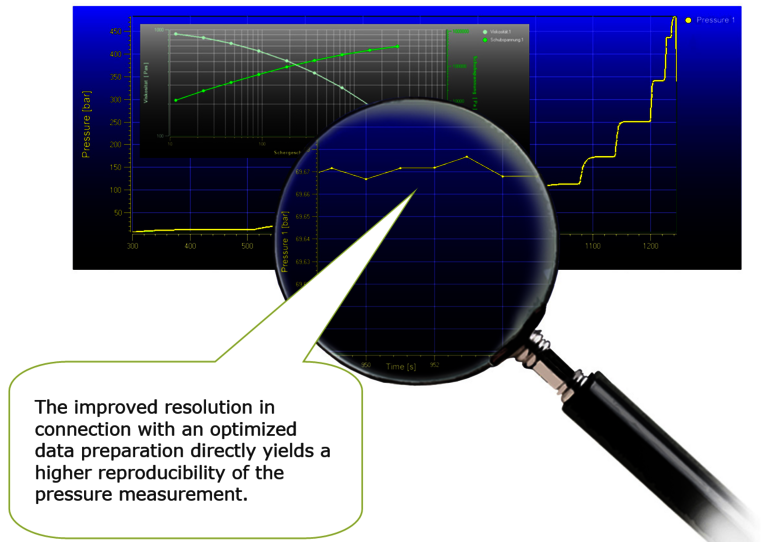 Figure 1: Flow curve illustrating a pressure transducer with the resolution of 0.005 % of full range
Figure 1: Flow curve illustrating a pressure transducer with the resolution of 0.005 % of full range
The control and calibration of the pressure transducer is made with a pressure measurement balance (weighbridge), which uses oil as a medium to transfer the pressure very accurately.
The following listed data table shows the specific ranges of the latest device generation, RHEOGRAPH 20, 25, 75 and 120 compared to the previous generation with regard to the repeatability of the pressure measurement.
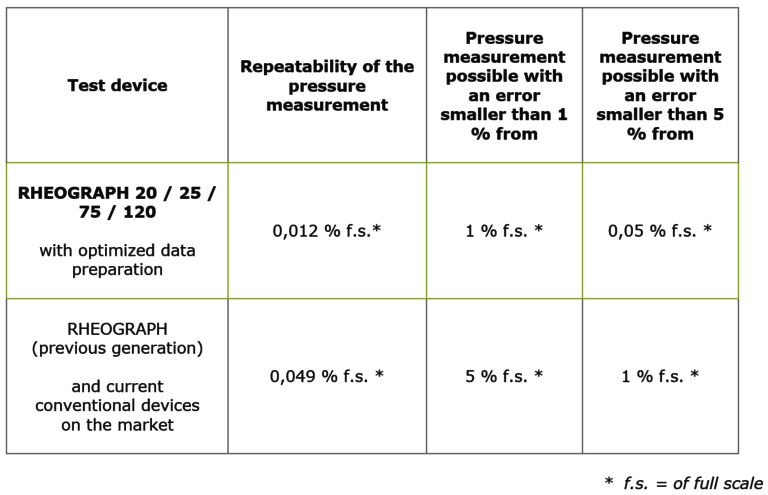
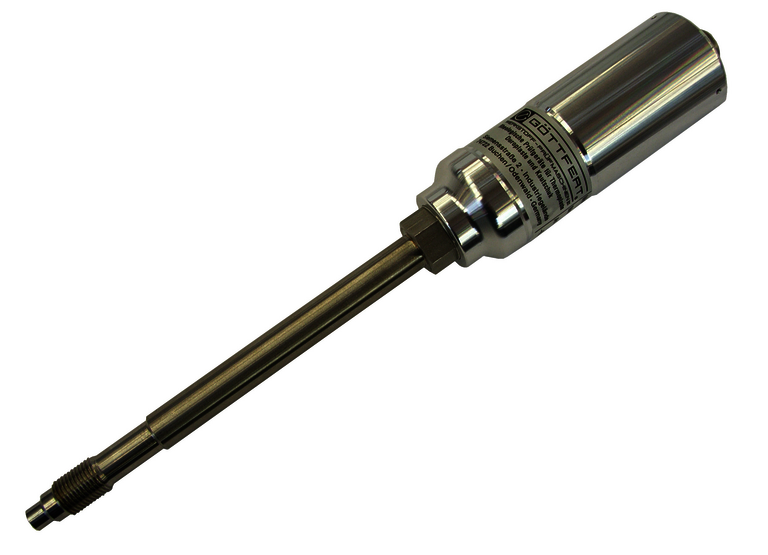 Figure 2: CAN-Bus pressure transducer with improved electronic and saved characteristics
Figure 2: CAN-Bus pressure transducer with improved electronic and saved characteristics
As an example we look at Polycarbonate (PC), with its distinctive Newtonian plateau and shear thinning area where our latest technology is extremely helpful.
To run a full shear rate flow curve one has to choose a pressure transducer that covers the max. anticipated pressure of this test run and in this case, one would use a 2000 bar transducer. At very small shear rates the pressure values are measured in a very low area of less than 1-2 % of its range, which is being detected by conventional resolution and the usual signal preparation but with a high spread.
To demonstrate the effect of the improved resolution, the following measurements show the differences of the former machine generation (and those competitors use) and a device of the latest series (RHEOGRAPH 120) with optimized signal preparation (figure 4 and 5).
Measurement with the old technology (figure 4) shows that with a shear rate of 50 1/s and up, a Newtonian plateau is formed and test points have good repeatability with the 2000 bar pressure transducer. However, data is unreliable in the lower shear rate range (see marked area).
To measure the smaller shear rates the pressure transducer must be exchanged for a pressure transducer with a smaller range to complete the test series.
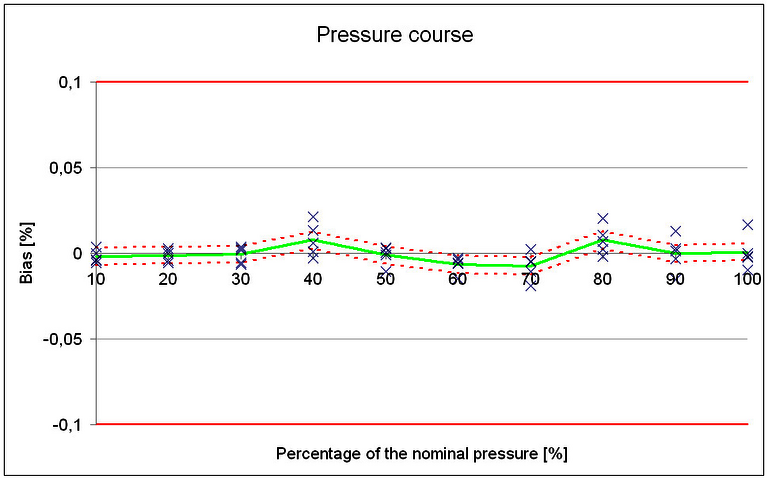 Figure 3: Deviation curve
Figure 3: Deviation curve
The initial situation of the old machine generation (RHEOGRAPH 2003/6000):
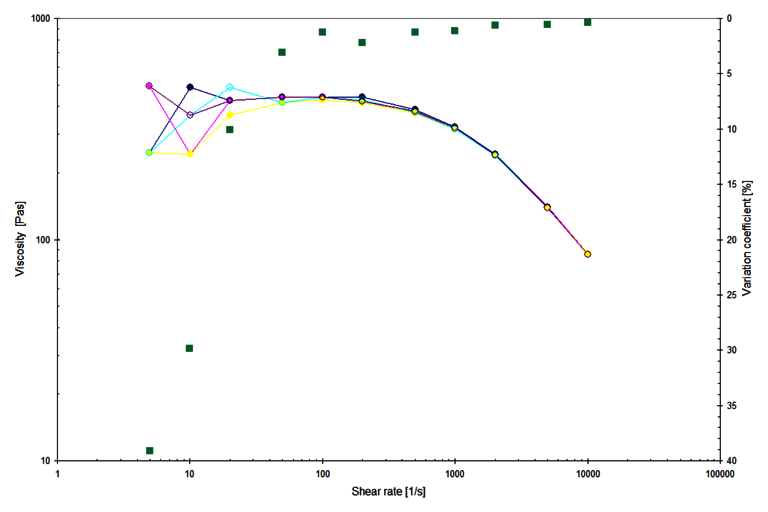 Figure 4: Detection of the repeatability with the old RHEOGRAPH (or method used currently by all other manufacturers)
Figure 4: Detection of the repeatability with the old RHEOGRAPH (or method used currently by all other manufacturers)
In the following figure (5) the same measurement is shown with the new device (RHEOGRAPH 120) using optimized signal preparation. The lower measurement range was expanded by a full decade down to a shear rate of only 5 1/s with similar repeatability.
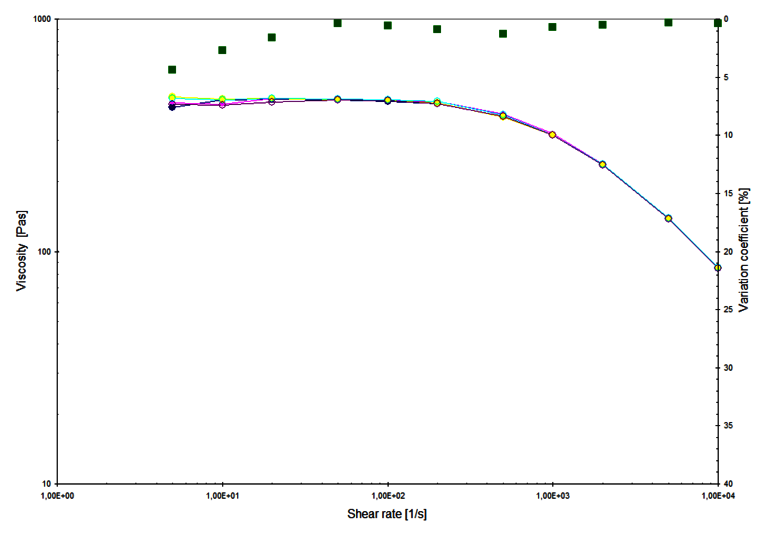 Figure 5: Detection of the repeatability with the RHEOGRAPH 120 with optimized signal preparation
Figure 5: Detection of the repeatability with the RHEOGRAPH 120 with optimized signal preparation
With the latest machine generation RHEOGRAPH 20, 25, 75 and 120 the accuracy of the pressure measurement was improved by more than one decade. The example above, with Polycarbonate, clearly shows that this accuracy leads to a widening of the measurement range of at least one decade.
The improvements in overview: